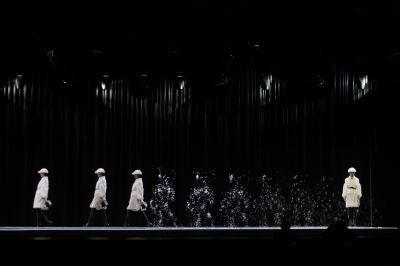Fashion brands as diverse as major Brit label Burberry and emerging German designer Stefan Eckert have been busy integrating holograms into their runway presentations.
Back in 2006, fashion's ultimate darling Alexander McQueen was the first to use them as part of a fashion show when a hologram version of Kate Moss modeled a dramatic organza gown, seemingly appearing out of the air inside an empty glass pyramid.
Earlier this year, Burberry relied on a mix of real models and holograms to present its collections on the occasion of its Beijing store opening. And German designer Stefan Eckert has collaborated with motion graphics designer Tim Joeckel for his latest fashion show to present his clothes exclusively on a virtual model in the world's first 3D hologram fashion show.
"The result was one of the biggest holographic projections ever which creates a complete optical illusion and breaks the rules of time and space on stage," Joeckel writes on his Vimeo account.
Together with fashion films as seen at Gareth Pugh, for instance, these kind of new-generation shows are thought to soon replace conventional presentations, at least in parts. Critics say, however, that clothes' movement should be seen in real life, rather than filmed for theatrical effect.
Watch Eckert's show, which took place in March, at http://vimeo.com/23259282.

Join our commenting forum
Join thought-provoking conversations, follow other Independent readers and see their replies
Comments